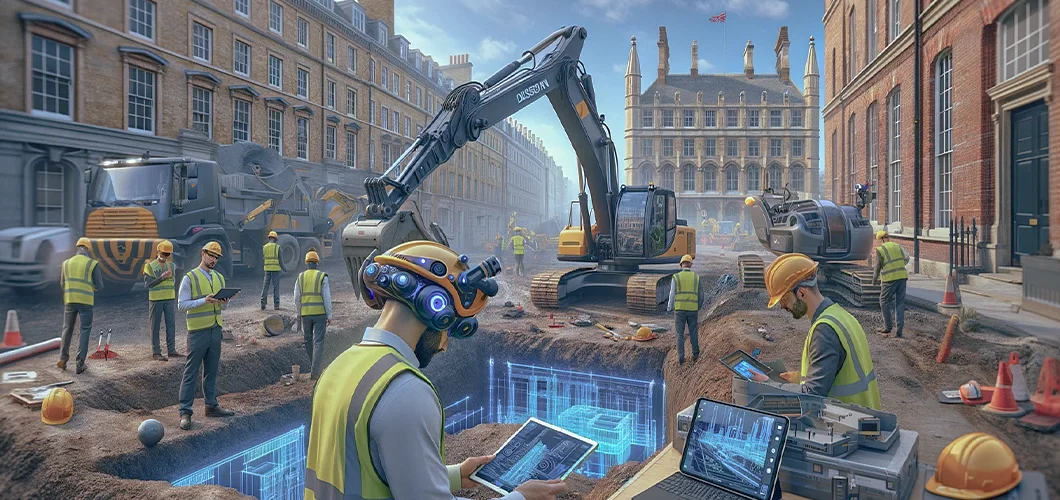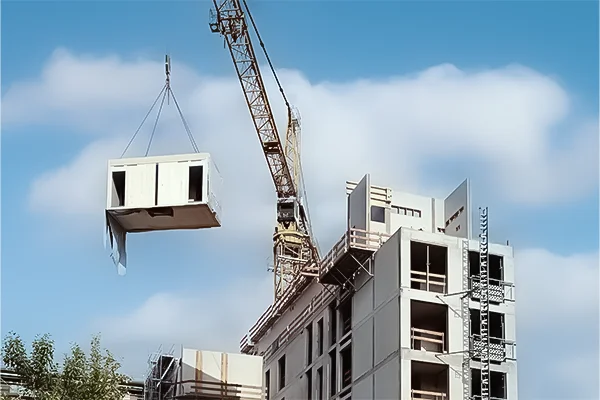
New Technologies in the Construction Industry 2024
Are you about to begin working on a construction project? Are you looking to integrate new technologies in construction that can help you achieve your desired outcomes? Allow us to share that in today’s blog, we aim to explore construction technologies. These digital construction technologies continue to shape today’s world by allowing sustainable decision-making.
So, let’s dive right into them to know how these technologies are facilitating construction professionals.
Top 8 Latest Construction Technologies in 2024
There is more than one latest construction technology that has revolutionized the world of construction landscape. The best thing about each innovation and technology in construction is that they offer unparalleled efficiency, accuracy and sustainability. In addition, these technologies also allow cost-effective solutions that are great for every stakeholder.
Continue reading the blog as you will learn about new technologies in the construction industry. We can guarantee that these modern solutions won’t only help you make informed decisions but you will also efficiently meet your project requirements.
1. Cloud-based Collaboration Platforms
Conventional building methods did not offer seamless coordination among project teams which would severely impact the project’s progress. However, with the advancements in technology, cloud-based platforms were developed which also offer working in collaborative environments. As you are aware you cannot move forward in any project if you are not able to coordinate and collaborate with your team members. That’s why the project teams must utilize cloud-based collaboration platforms for their construction projects – regardless of their scale.
Allow us to share a couple of cloud-based collaboration platforms that benefit construction professionals.
- Procore
- Revizto
- Autodesk BIM
- Trimble Connect
Related: Bim software tools
2. Artificial Intelligence (AI)

Artificial Intelligence (AI) continues to transform the world of construction and architecture. AI offers advanced algorithms that are crucial for working on and finalizing several construction processes. In addition to that, AI also provides stakeholders with machine-learning capabilities that help optimize the projects. We must also mention that AI enables construction professionals to make wise choices when it comes to resource allocation. Moreover, AI can also help in efficient waste management which is beneficial for reducing all sorts of environmental impacts.
By utilizing AI for construction projects, project teams can make informed and sustainable decisions.
3. 3D Printing
Another noteworthy construction technology is 3D printing. This advanced technology enables the stakeholders to think beyond their imagination and make better decisions accordingly. Unlike traditional building methods, now construction professionals can create highly intricate 3D models of their structures. They can also visit these models to identify potential threats and also review spatial relationships between design elements. By doing so, the project teams can ensure that they are spending their money and time on necessary processes.
We must also mention that 3D printing technology is also beneficial for minimizing environmental impact. In addition, stakeholders can do away with labor-intensive tasks to ensure efficiency and productivity.
4. Internet of Things (IoT)
The Internet of Things (IoT) has revolutionized the construction landscape especially when it comes to developing safe working environments. IoT utilizes advanced sensors capable of monitoring all that is taking place at a construction site. Some of the things that these sensors and devices can do are that they enhance safety levels by gathering data in real-time. The stakeholders can monitor the movements of workers and heavy machinery. Furthermore, IoT is also capable of detecting severe hazards such as gas and water leaks. This type of information alerts the project teams, who can then immediately address such hazardous conditions.
Also, IoT enables construction professionals to make the most of smart wearables that can monitor and detect health-related issues. That becomes possible through sensors which are designed to mitigate several potential workplace risks.
4. Robotics
For every construction project, achieving precision and accuracy is one of the top goals. This means we must utilize the tools and technologies that are capable of getting things done our way. Conventional building methods were not designed to fulfil modern project requirements. And that’s where innovative construction technologies come into play. The integration of robotics is one such example that has completely transformed traditional building methods. Robots not only make the processes time-efficient but they also improve project management in many ways.
While offering time-efficient solutions, robotics also enhances project safety and also allows seamless collaboration among team members.
5. Augmented Reality (AR) and Virtual Reality (VR)
We have talked about how innovative new technologies in construction have transformed the industry. Now, we would like to talk about how AR and VR contribute towards improving the design and planning phases.
Okay so, AR and VR allow stakeholders to enjoy immersive experiences that offer virtual models of infrastructures and buildings. This means that the architects, engineers and other project teams can interact with the design aspects way before the construction starts. This ability not only allows them to thoroughly review the models but they can also identify clashes and proactively resolve them. We must mention that all such technologies are also instrumental in reducing project costs and getting things done efficiently. However, there is something unique about AR and VR that makes these technologies stand apart. Continue reading the blog to know what we mean.
AR and VR allow the project teams to work by coordinating and collaborating throughout the project lifecycle. These elements are crucial for the successful delivery of the project. In addition, communication can be established regardless of the teams’ physical locations. This makes everything even more smooth and super efficient.
6. Modular Construction and Prefabrication
Although, all new and innovative construction technologies are our favorite but we like modular construction and prefabrication the most. In this part of the blog, we will share what these technologies mean and how they are empowering construction professionals in their day-to-day tasks.

In modular construction and prefabrication, concerned teams can manufacture structure’s modules in a factory-controlled environment. Know that this process is performed off-site. Modular construction and prefabrication give stakeholders the flexibility to build components or modules and then take them to the construction site. Several components can be built through modular construction such as rooms or even different building sections. Also, these components are complete with fixtures and finishes and the stakeholders only have to assemble them inside the structures later on.
7. Drones for Construction
With the advancements in technology, construction professionals ensure that they make the most of the modern tools and methods to work on their projects. One such example of that is the use of drones that are used in the initial stages of a construction project. We can’t wait to share everything that you need to know about how drones are used for surveying the sites. So, keep reading the blog!
As we have successfully entered 2024, we will see a rise in the use of drones for surveying and inspection methods. And here is why: by using the latest technology such as advanced camera systems and LiDAR, drones are capable of gathering highly detailed and accurate site information. Since this information is being gathered in real time, the stakeholders are in a much better position to think through the entire process and take final calls. The use of drones for surveying not only reduces labor costs but it ensures accuracy in the project data.
We must also mention that drones also contribute towards keeping the working environments super safe. Well, you read it right! Allow us to share that with drones in action, the drone surveyors don’t have to be physically present in hazardous environments. The project teams can easily get their hands on the data that they require and continue to work on more important tasks.
8. Sustainable Construction
When it comes to building structures, one can think that the built environments cannot be considered sustainable. If we are being honest, we would like to agree with that notion. However, we want to also share a couple of insights that can help you change your perspective. Make sure that you read the blog till the end to know what we wish to say!
We know that the word ‘sustainable’ has been used quite a lot of time but it still sounds like a buzzword. While people have their reasons for feeling that way; we must mention that it’s high time we start making sustainable choices to reduce the environmental impact. Now, we know that cannot happen overnight. However, the construction and architecture industries are actively looking for and incorporating sustainable solutions to build structures.
Learn: How bim helps sustainability?
The sustainable construction solutions might not be digital but their impact is far bigger than one can imagine. For example; greener infrastructure can be built by utilizing local building materials. This won’t only reduce the logistical costs but will also boost the local economy. In addition, construction professionals have also started to prefer low-impact manufacturing processes to play their role in protecting the environment. These processes can include utilizing recycled or reclaimed materials or making the most of natural resources for construction projects.
Before we conclude, we urge you and your teams to explore the new construction technologies in 2024 and beyond. By doing so, you will ensure that you are working on sustainable structures that are safe for both the current generations and the future ones.
